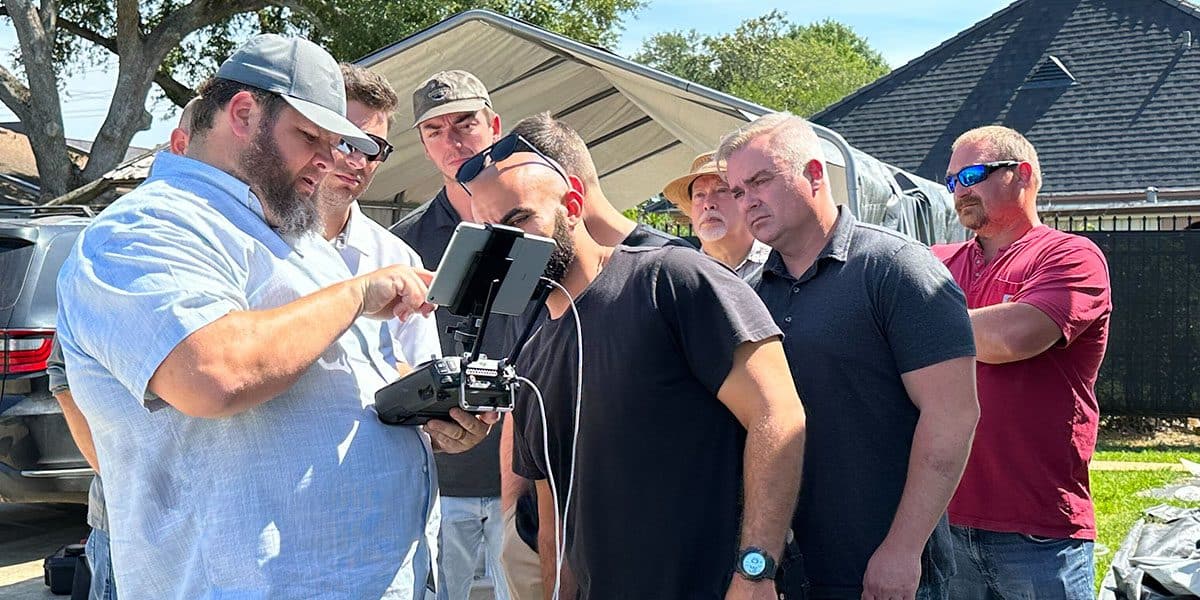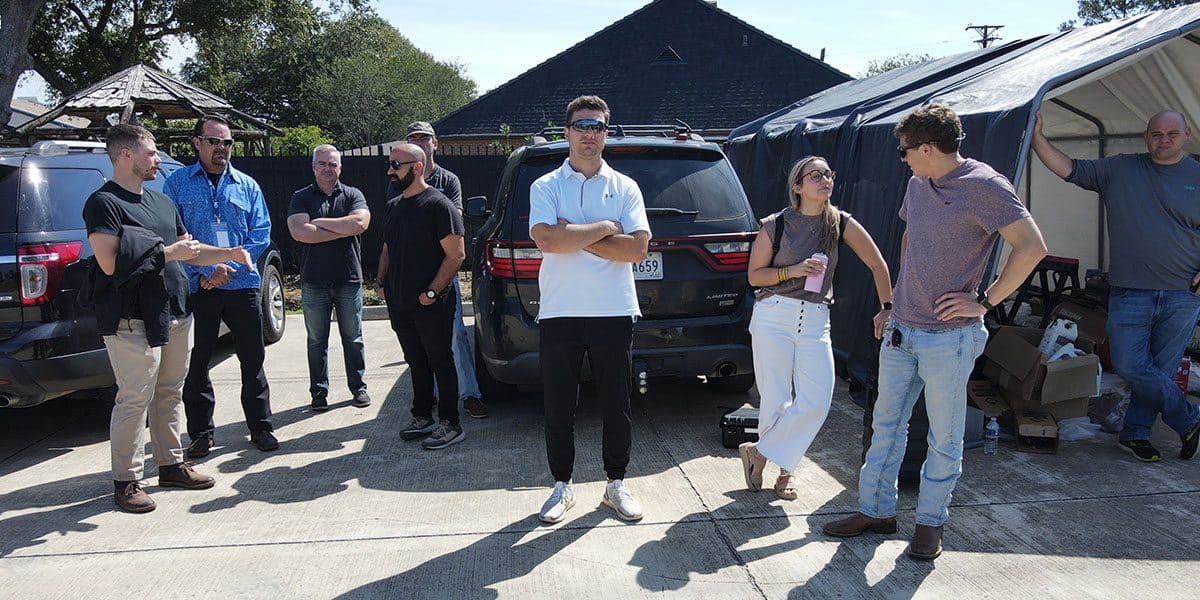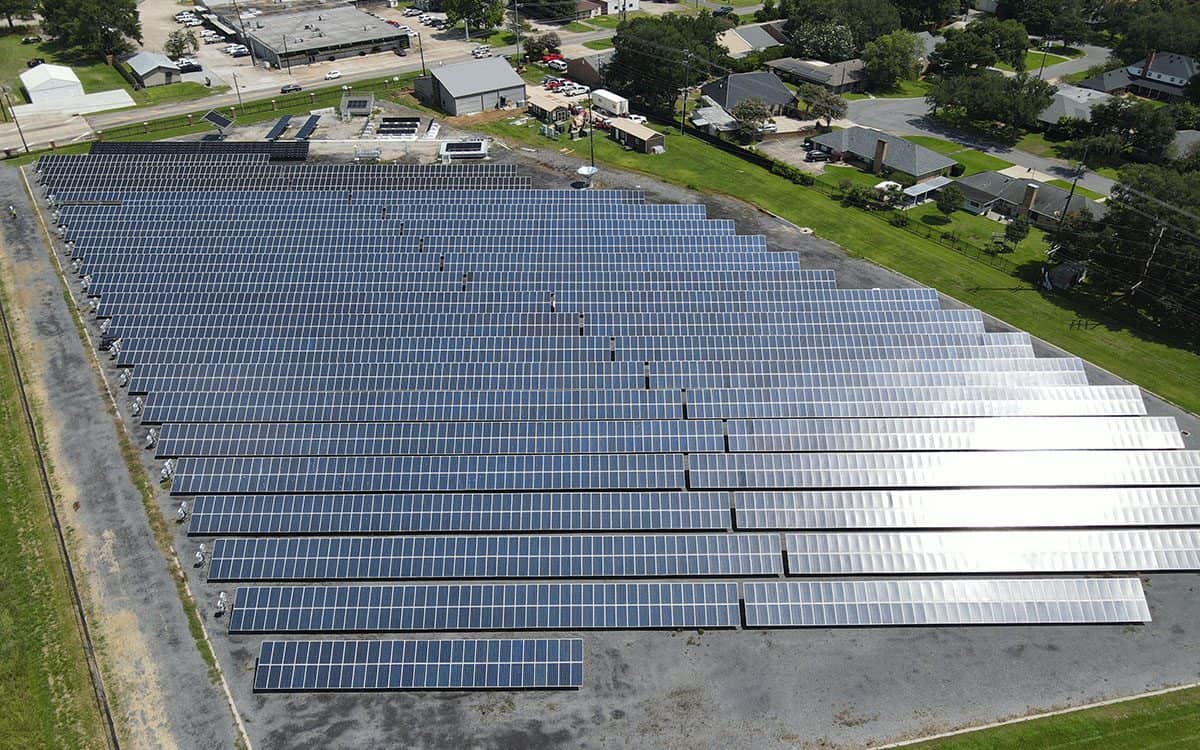Unmasking the Heat: The Art of Thermal Inspections in a Solar Farm
On a hot and sunny May day in south Louisiana, the FlyGuys team took a field trip to see one of the largest outdoor solar testing facilities in the southeastern United States, the University of Louisiana Solar Farm. The purpose of the excursion was field training for our new thermal pilots. However, the rest of the team was eager to learn as well, so we tagged along. The marketing and sales teams were especially excited as we rarely see drones flying a real-time mission, so the outing was a welcome reprieve from our daily agenda.
The solar farm at UL plays a crucial role in research and innovation within the campus community. These solar farms serve as a dynamic platform for engineering students to conduct hands-on research, exploring various aspects of renewable energy. From optimizing PV panel performance to investigating new materials for improved efficiency and developing innovative integration methods, passionate students delve into diverse research areas that push sustainable technology.
Like any infrastructure, solar farms require regular inspections. Thermal inspections are essential for solar farm maintenance due to their ability to detect and address potential issues promptly. Solar panels are subjected to various environmental factors, such as temperature fluctuations, weather conditions, and potential damage.
And that is where FlyGuys enters the picture.
Leading the charge on this sun-soaked expedition was Jonathan, our trusty thermal mission coordinator, and the incredible Mavic 2 Enterprise Advanced drone. The M2EA is a game-changer for aerial thermal inspections. This remarkable drone is purpose-built for professional applications, offering a powerful tool for capturing thermal data in various industries. With its robust construction and impressive flight capabilities, the M2EA drone excels at navigating the skies while equipped with specialized imaging cameras. These cameras enable the detection of hotspots and temperature anomalies in the panels, electrical infrastructure, and other critical components of a solar farm. The M2EA drone’s intelligent flight modes, obstacle avoidance systems, and extended flight times ensure precise and efficient thermal inspections. This allows for early detection of issues that impact performance. Its ability to capture thermal data from above provides valuable insights into the health and efficiency of the solar farm, enabling proactive maintenance and maximizing energy output.

Pre-Flight Check
While some of us slathered on sunscreen as we waited for the drone to take flight, Jonathan began the thermal flight lesson, “Before the drone can take off, you must check the height of the powerlines,” emphasizing, “The first and foremost important thing of any mission is safety.”
He showed the drone pilot trainee that by using the Drone’s Eye View, or the drone’s camera and live feed, the pilot can carefully maneuver the drone to capture images or video footage of the power lines from different angles. By adjusting the drone’s altitude and position, the pilot can gauge the relative height of the powerlines compared to the surroundings.
Once Jonathan affirmed the power lines wouldn’t damage the drone or hinder the inspection, he began checking the GPS settings. He noticed the compass was not properly set, so he needed to calibrate the drone. “Calibrating a drone is not always required, “Jonathan explained. “However, if the GPS is off then you will need to calibrate to get accuracy, stability, and optimal performance during the flight.” We learned that calibration involves aligning the drone’s internal sensors, to ensure accurate measurement of movement and orientation.

Jonathan demonstrated how to calibrate the M2EA. “First, find a level surface where the drone can be placed for calibration.” Jonathan began his drone calibration in the palm of his hand. “Next, power on the drone and the controller, making sure they are connected and communicating properly. After that, you will need to determine the calibration mode, which can be done through the drone’s mobile app or controller.
“Once you’re in calibration mode, there will be a series of on-screen prompts that are important to follow carefully to get accurate calibration. These prompts may involve rotating the drone around different axes or placing it in specific orientations. The calibration process enhances flight performance, responsiveness, and reliability, providing a smoother and more controlled flying experience.”
Jonathan continued with the pre-flight checklist. “The next step is to capture an irradiance photo before we begin the flight to confirm we have 600+ watts/meter squared. If during flight we would need to change batteries, we would take another irradiance photo and another one for each battery change after that. At the completion of the flight we take a final irradiance photo which confirms that we indeed did capture data with a 600+ watts/meter squared minimum per solar inspection regulations.”

The Flight
“There will be three automated inspection flights in today’s mission,” Jonathan informs us. “The first flight of our thermal inspection will capture IR/RGB split images, a powerful technique that enables us to uncover any hotspots within the solar farm.” IR/RGB split images combine both infrared (IR) and red-green-blue (RGB) imagery, providing a comprehensive visual representation. Hotspots, in the context of solar panels, refer to localized areas that exhibit higher temperatures than the surrounding areas. Hotspots can cause potential issues, such as malfunctioning cells or faulty connections, that could compromise the solar farm’s performance and longevity. Detection of hotspots allows for proactive measures to ensure the solar farm operates at its full potential, maximizing energy production and minimizing potential risks.
“The second flight is the oblique flight.” During a thermal inspection, an oblique flight refers to a specific flight pattern of the thermal drone that captures images of the solar panels from various angles and perspectives. Unlike a traditional top-down view, an oblique flight captures the panels at an inclined or slanted angle. This approach provides valuable additional information by revealing the sides and edges of the panels. This can help detect potential issues that may not be apparent from a straight overhead view. Incorporating oblique flights into the thermal inspection process ensures a comprehensive assessment of solar panels. This enables the identification of any hotspots or anomalies that require attention. This approach maximizes the efficiency and performance of the solar farm, providing valuable insights for optimal maintenance and operation and allowing for a quick overview of the farm for quick reference points for problem areas.
“For the final flight, we will map the solar farm at maximum height.” This flight is the process of conducting aerial surveys at the highest permissible altitude. Mapping the solar farm at maximum height enables the acquisition of comprehensive and accurate data, covering a wider area in a single survey. This approach facilitates the creation of high-resolution maps, the identification of potential shading issues, and the assessment of the overall layout and condition of the panels. The gathered information supports informed decision-making concerning maintenance, repairs, and solar farm performance optimization.
“The last step in our thermal inspection is capturing an irradiance meter photo,” Jonathan concludes. “We use our phone camera to take the shot, aligning it at the same angle as the solar panels in relation to the sun.” This photo is taken to measure solar irradiance on the panels. “By capturing this irradiance meter photo, we gain valuable data on the actual amount of sunlight reaching the panels, which allows us to assess their performance and efficiency more accurately. The information helps identify any discrepancies between expected and actual energy production. This enables solar farm researchers to make informed decisions regarding system optimization, maintenance, and potential improvements in energy output.”
Spanning an impressive 6 acres, the 4,200-panel solar field is a beacon of the University of Louisiana’s position as a national frontrunner in sustainable and traditional energy technologies. This expansive solar farm not only serves as a testing ground for cutting-edge solar innovations but also symbolizes the university’s unwavering commitment to environmental responsibility and forward-thinking energy solutions. With its remarkable size and dedication to renewable energy, the University of Louisiana Solar Farm showcases UL’s leadership in the pursuit of a greener and more sustainable future.

The Future of Solar Farms
There are exciting advancements on the horizon for solar farms. As technology continues to evolve, we can anticipate several key developments that will shape the future of solar farms. First and foremost, we can expect significant improvements in solar panel efficiency, enabling even higher energy yields from the same surface area. This increased efficiency will drive down costs and make solar energy more accessible and economically viable.
Moreover, energy storage solutions will play a crucial role in solar farms’ future. Advancements in battery technologies will allow solar farms to store excess energy generated during peak production periods and utilize it during periods of low sunlight or high demand. This enhanced storage capacity will enable solar farms to provide a more reliable and stable power supply, further solidifying their role as a dependable renewable energy source.
Additionally, we can anticipate the implementation of smart grid technologies and advanced monitoring systems. These technologies will enhance the control and management of solar farms by optimizing energy distribution, improving grid stability, and enabling seamless integration with other renewable energy sources. The advent of artificial intelligence and machine learning algorithms will further enhance the efficiency and operation of solar farms, enabling real-time monitoring, predictive maintenance, and optimal power generation.
Overall, the future of solar farms is bright, promising a renewable energy landscape that is more efficient, cost-effective, and sustainable. With continuous innovation and advancements, solar farms will continue to play a crucial role in meeting our energy needs while minimizing environmental impact.
Power up with FlyGuys and schedule a consultation today.
